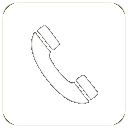Rear end Collisions – Surrey
ICBC Rear End Collision Claims – Surrey, BC Office
 Our Experience – Rear End Collisions:
Our Experience – Rear End Collisions:
Over the past 11 years, approximately 80% of the Surrey car accident claims we have dealt with have been rear-end collisions. We provide assistance with all types of rear end collisions, from minor bumps to severe crashes. As your lawyers, we act quickly to ensure that ICBC has all of the relevant evidence about your accident. In this way, we ensure that you are given fair compensation for your injuries. If you’ve been involved in a rear-end auto accident in Surrey, BC, we can help.
(ICBC injury claims lawyers)
Involved in a Rear End Collision?
Call us today for a free consultation 604-512-0301
Bungay Law Office – Surrey
#202 – 7164 – 120th Street

Our Surrey law office is conveniently located at 72nd Ave and Scott Road (120th). Easily accessed in Surrey or Delta by transit. We are in the Scottsdale Square Business Centre, on Scott Road, across the street from Target and RBC, and next door to BMO.
Minor Vehicle Damage can still cause injury
Many of our clients are involved in accidents where the vehicle damage is minor. This does not mean you are not injured. Medical research has shown that vehicle damage, in and of itself, is not a good indicator of the type of injuries one can have following a rear end collision. Similarly, vehicle damage is not always reflective of just how hard you are hit from behind. As your lawyers, your version of the accident is what we believe in. Over the past 11 years, we have obtained good settlements for hundreds of people who ICBC refused to pay because of minor vehicle damage.
Rear end Collisions: 99% of the time, the rear vehicle is 100% liable
In rear end collision accidents, the vehicle that does the hitting i.e. the rear vehicle is almost always held responsible. In these types of cases, the law states that the rear vehicle is assumed to be negligent, and that driver must prove they are not responsible. While many have tried to disprove their fault, the Courts usually find that the rear vehicle is 100% liable. Even in rare cases when the lead vehicle does something dangerous that caused the collision, the Courts will usually assign a high degree of responsibility to the driver in the rear.
The Law: Keeping a safe distance and speed in the circumstances
Section 162 of the BC Motor Vehicle Act requires drivers to travel at a safe distance behind other vehicles. What is considered to be a safe distance depends upon the flow of traffic, road conditions, and the speed of other vehicles. Generally, the law expects a driver keep enough distance to be able to bring their vehicle to a stop if the vehicle in front stops abruptly. Even if the driver in front stopped for no good reason, the law expects you to keep an eye out for this, and to be able to bring your vehicle to a stop before hitting the vehicle ahead of you.
Rear-end collisions in ‘stop and go’ traffic
Rear-end collisions often occur in ‘stop and go’ traffic. In these circumstances, there is a line of slow moving cars that are starting and stopping constantly due to gridlock, rush hour, or an accident. In these circumstances, you may be forced to bring your vehicle to a stop quickly because the vehicle in front of you slams on its brakes. Sometimes, you may be forced to take evasive action and move your vehicle to the right or left to avoid a car in front of you. If you are then hit from behind, the question arises, who is at fault?
If you are hit from behind in stop and go traffic, the driver who hit you is likely 100% at fault, even if you slammed on the brakes before being hit from behind. The courts in BC expect motorists in slow traffic to maintain a safe distance from the vehicle ahead of them and drive reasonably in the circumstances. In other words, the Courts in BC say that drivers in stop and go traffic should appreciate there is a risk of vehicles ahead of them stopping abruptly because of the slow-moving nature of the line-up of cars.
Bicycles and Rear End Collisions
For bicycles involved in rear end collisions, the same rules of the road apply to bicycles as to cars and trucks. In other words, if you are riding a bicycle on a roadway, and you are struck from behind, it is very likely the driver that hit you will be held responsible for the accident.
On the flip side, cyclists are required to keep a safe distance behind motor vehicles in front of them. If a vehicle comes to a stop in front of a bicycle, the riding cyclist must be far enough away to be prepared to stop safely. In the case of Rudman v. Hollander, a cyclist sued a driver who stopped abruptly in front of him going downhill. The cyclists maintain a distance of 12 feet behind the driver. When the driver in front stopped, the cyclist veered away to avoid a collision, fell off his bike and was injured. The judge in the case dismissed the cyclist’s claim and held that he was 100% responsible for his own injuries. The Court noted that, in the circumstances i.e. going downhill, 12 feet was not a safe distance for the cyclist to keep between him and the vehicle ahead of him.
The importance of using your hazard lights if your vehicle is stopped
If you stop your vehicle on the road for a significant length of time, you are required to activate your hazard lights, otherwise known as “4-way flashers”. If you are stopped for a long time, and you are hit from behind, you may be held liable if you are rear-ended and your 4-way flashers are not activated. In the case of Vancouver Police v. Meekley, a police officer stopped in the middle of a roadway to assist another police car that was stopped on the side of the road. The police officer did not activate her rooftop or hazard lights. A judge cited that the police officer was negligent for not activating her hazard lights, and she was found 50% liable for the rear end collision.
Stopping abruptly in an intersection – the lead driver may be partially responsible
In rare cases, the driver who is the lead vehicle (the driver hit from behind) is held partially responsible for the accident. In these cases, there must be evidence that the lead driver stopped abruptly and without a good reason to do so. For example, if there is evidence that the lead vehicle stopped in the middle of an intersection for no good reason, that driver may be held partially liable for the collision. In the case of Yacub v. Chipman, the driver of the lead vehicle stopped in the middle of an intersection on a yellow light. In that case, a judge found that she was 75% responsible for the accident.
In the case of Molson v. Squamish Transfer Ltd., a driver stopped suddenly to avoid hitting a small animal that ran across the road. Another driver hit her from behind. The judge hearing the case determined that it was unreasonable for the lady to stop in order to avoid hitting the small animal. She was found 50% responsible for the collision.
Drivers blocking a roadway to talk can be held responsible for a rear end collision
Drivers who stop alongside each other to talk through their window can be held liable for an accident. This is a common occurrence in some small communities where traffic flow is lower than in a big city. In the case of Lloyd v. Fox, two drivers stopped beside each other on a small road to chat with each other. In doing so, they blocked the roadway. A motorcyclist struck one of the drivers from behind. The drivers who blocked the roadway were found 50% responsible for the injuries of the motorcycle rider.
(ICBC injury claims lawyers)
Surrey, BC – Rear End Collision Lawyers
Call us today for a free consultation 604-512-0301
Bungay Law Office – Surrey
#202 – 7164 – 120th Street

Overall rating of Google reviews
4.7 out of 5 STARS
BACK to: Surrey ICBC Claims home page
Author:



